If you have ever had to deal with a flea infestation, you know how difficult it can be to deal with. Fleas are dogs' most common enemy. They're annoying, painful, and can cause severe health issues if not treated.
While most people think that fleas only affect fur-covered creatures, that couldn't be further from the truth.
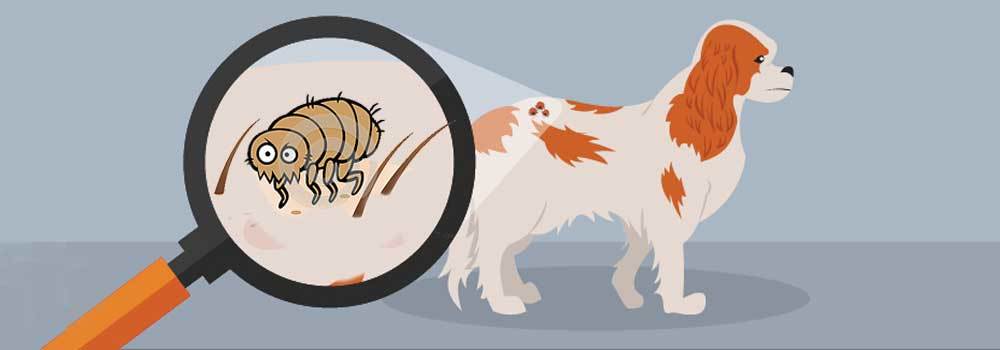
Fleas can live and breed inside your home and out in the yard! You may notice fleas crawling on your feet as you walk around your home. They may even bite you too! To make matters worse, your infestation could be much larger than you think.
Fleas go through multiple life stages. So, if you find an adult flea, there are probably hundreds of eggs and young fleas hiding within your carpet or on your furniture.
It's important to address flea infestations as soon as you notice your dog scratching. Thanks to the insect's jumping abilities, infestations are capable of spreading very fast. There's a lot you can do to take care of fleas once and for all. Here are some tips on how to get rid of these pests from your dog and your home.
How to Get Rid of Fleas on Dogs
#1. Use a Flea Comb
One of the first things you should do is use a flea comb. Flea combs are durable and feature very thin teeth that are spaced close together. They're specifically designed to help you get rid of fleas, larvae, and eggs.
Just give your dog a good comb-through. Make sure that your four-legged pal doesn't have any knots or tangle in their fur before you start, as the pulling of a fine-toothed flea comb can be quite painful.
It's best to do this outside. Most often, you'll only find adult fleas. This is a good sign! It means that the fleas haven't had a chance to lay eggs, which could spread the infestation. By taking care of the fleas at this stage, you can stop a large infestation before it even happens.
#2. Give Your Dog a Thorough Bath
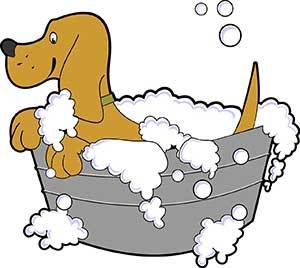
Next up is a bath. While your dog may protest this method, it's important to give them a thorough bath that covers every inch of their body. You can use a number of different cleaning products to get the job done.
A pet-approved shampoo is always best. Human shampoos aren't made to work with the pH balance of a dog's skin, so you need to stick with a product that's made for canines.
There are many flea shampoos on the market that are specifically formulated to kill these pests on contact. Though, they do contain chemicals that could be irritating on the skin.
* If your dog is a bit sensitive, you may want to go with a gentler alternative that's organic and free of sulfates.
- Pump Up the Effectiveness
You can also pump up the effectiveness of the shampoo with a few natural ingredients. A few tablespoons of lemon juice can do the trick, as its a natural flea deterrent. Also, you can use rosemary oil, peppermint, or lavender.
Dish soap is also an option. While dish soap isn't made for dogs, it does a great job at killing fleas. It's capable of dissolving the protective waxy layer on a flea's body and prevents them from using water tension to stay on top of the surface.
As a result, they drown. Just be careful and pay close attention to how your dog's skin reacts to the soap.
#3. Apply a Natural Rinse
After you're done with a bath, you can apply a homemade rinse. Apple cider vinegar is a great product that serves many practical purposes. When applied to your dog's skin, it balances out pH levels.
It's a great way to keep your dog's skin in good condition after using a harsh shampoo or grooming product. Best of all, fleas hate it!
To make a rinse, just mix 4 ounces of water with 6 ounces of apple cider vinegar. Put it in a spray bottle and shake it well to ensure that the solution is fully incorporated. Them, spray it all over your dog's body. Make sure to get it on their belly, as this is often the go-to spot for fleas.
#4. Use a Topical Spray
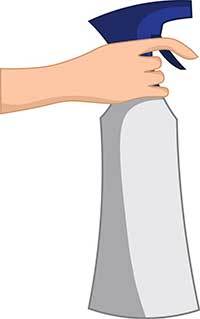
To keep your dog flea-free, you can use a topical spray. There are a couple of ways to go about this. One option is to use store-bought products. Many leading brands have natural and chemical-based topical sprays that can be applied directly to your dog's fur every once in a while.
You can use this daily to ensure that new fleas don't make a home in your pup's fur.
If you want to go the natural route, you can also make the spray yourself. The apple cider vinegar spray from earlier is a good all-purpose option that can be used regularly. Also, you can take herbs and essential oils to your advantage. Fleas hate things like lavender and lemon. Simple dilute the herb or oil in some water and apply it to your dog.
#5. Invest in Prescription Repellants
One of the most effective ways to keep fleas off your dog and out of your home is a prescription flea product. Offered by vets, these little pills can provide a month of protection. How do they work? Well, they turn your dog's body into a flea killing machine.
When these pills are consumed, the medication flows through your dog, transferring it to fleas when they take a bite. It destroys the flea's nervous system, causing them to die pretty quickly. Most products are capable of taking care of all life cycles.
The great thing about a prescription is that it makes infestations nearly impossible. It's not uncommon for infestations to be eradicated once a dog is fully protected. With no source of food, fleas can't survive.
Depending on the medication, it may also prevent other pests as well, such as ticks. With all that being said, it's important that you consider the side effects. As with any medication, there are risks involved with taking oral flea pills. You should consult with your veterinarian to assess the possible side effects and see if your dog is healthy enough for them.
$6. Use Spot Treatments and Collars
Beyond prescription medications, there are a couple of different products that can help to keep fleas off your pooch. Spot treatments are similar to oral pills. However, they use different chemicals to kill fleas and are applied to your pup's back.
As always, consider the side effects. These spot treatments have been known to cause irritation. Plus, there's the risk of your dog licking it off and ingesting the chemicals.
Flea collars are also effective. There are a couple of types of collars available. Some affect your dog's body like medications to kill fleas when they bite. Others emit a strong fragrance or gas that takes care of any flea that tries to burrow into your companion's fur.
The upside to spot treatments and flea collars is that they're readily available and very affordable. You can often find them at your local grocery store. The downsides? The prevalence of these products has lead to fleas in many areas becoming resistant to the chemicals. In some places, fleas are downright immune to them, rendering them useless.
#7. Clean Your Home
If fleas have made their way inside your house, you'll need to do all that you can to kill the current population. Fleas reproduce quickly, so you have to act fast.
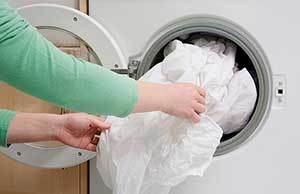
The first thing you should do is wash everything you can. Blankets, towels, and anything your dog lays on should be thoroughly cleaned in a washing machine with hot settings.
Take some extra time on your dog's bed, as this will probably be a huge flea breeding ground.
The cleaning and drying process will take care of fleas in any life stage. The heat from your dryer, in particular, can exterminate fleas pretty quickly.
Once you've cleaned all linens and soft items, keep them off the ground. Try to store them on a shelf or in a closet until you get rid of the fleas permanently.
#8. Create Flea Traps
Flea traps are a great way to catch adult fleas as they navigate your home. You can create effective traps with just a few ingredients around your home. It's best to lay the traps out at night, as fleas tend to be more active once the sun sets.
To create a trap, simply lay a mixture of water and dish soap on a bowl or aluminum pan on the floor. As mentioned earlier, the dish soap affects the surface tension of the water, causing the flea to drown. It also softens their body, making them very susceptible to death if they do happen to get out.
Lay a few of these traps around your home. Just make sure that your dog is contained and protected. The last thing you want is your dog to drink the mixture during the night.
#9. Vacuum Regularly
Carpeted areas, such as your living room or bedroom, are a great place for fleas to hide. They can move around between the fibers, laying eggs along the way. To get rid of them, vacuum your home regularly. To get rid of an infestation, you may need to vacuum every day or every other day to get rid of the entire population.
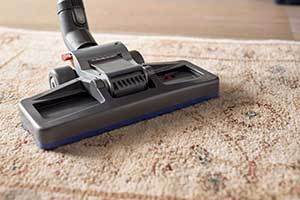
Make sure to get every inch of carpet. Don't avoid spots just because there's furniture in the way. Fleas prefer darkness, so they will often hide out under furniture, in shadowed parts of the floor, or parts of the room that don't get a ton of traffic.
After you have vacuumed, empty the contents of your vacuum cleaner in a bag outside and toss it in the bin. Don't throw away the dirt in your home. Just because you vacuumed up some fleas doesn't mean that they're not still alive.
#10. Utilize Pest Products
Pest control products are a dime a dozen. Visit your local hardware store and you're sure to find a full aisle of chemicals that are designed to kill pests. If you have a serious infestation, you may want to consider using them. There are products that are specifically designed to kill fleas on contact. You can get sprays as well as foggers.
Whatever you decide to use, it's imperative that you keep your family and dog out of the house. These chemicals are not to be played with. They're incredibly powerful and have a very strong odor. It's recommended that you use a face mask yourself just to avoid breathing in the toxic fumes.
To keep yourself, your dog, and your family safe, quarantine the house a few hours after you have used the product. Also, remove any fresh food and cover any crucial appliances, such as the refrigerator. The product's instructions should mention the specific safety precautions you'll need to take.
After you've applied the spray or let the fogger do its thing for a few hours, vacuum out your carpets to get rid of dead fleas. Also, open windows and let air circulate the home before you bring your dog and family back in.
#11. Use Natural Products
Want a gentler alternative to harsh chemicals in your home? Consider using something like baking soda or diatomaceous earth. Both of these powders are natural and safe. Just sprinkle the powders onto your floors.
If you're using them on the carpet, use a carpet rake to separate the fibers. This ensures that the powder gets down to the carpet pad.
Both baking soda and diatomaceous earth will dehydrate fleas, causing them to die. You may have to repeat this process a few times to kill the entire population. If you want the process to be as effective as possible, you can leave the powders on your floor for as long as two days. That's plenty of time to kill off the fleas.
#12. Protect Your Yard
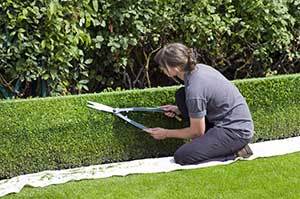
Fleas have to come from somewhere! Chances are, the population started growing in your own backyard before it made it to your home. Luckily, you can prevent this from happening in the future by making a few changes.
The first thing you'll need to do is clean up your yard. Cut the grass, trim down any overgrown plants, and pick up dead leaves.
Fleas thrive in damp and dark places. By cleaning up your outdoor space, you can minimize those spots and keep the flea population under control. For even more protection, you can use nematodes and plants.
Nematodes are microscopic worms that feed on tiny bugs. Many gardeners spray the worms around their flower beds to keep pests at bay.

You can pair nematodes with lemongrass, lavender, rosemary, and peppermint plants.
As mentioned earlier, fleas absolutely hate the smell that these herbs produce. So why not take this to your advantage and plant a few around your yard to keep them out?
Conclusion
Dealing with a flea infestation can be a huge headache, but it's not impossible. Keep these tips in mind the next time you notice fleas hopping around your home or burrowing through your dog's fur. Adopting several of these control methods can keep your dog and home flea-free.

